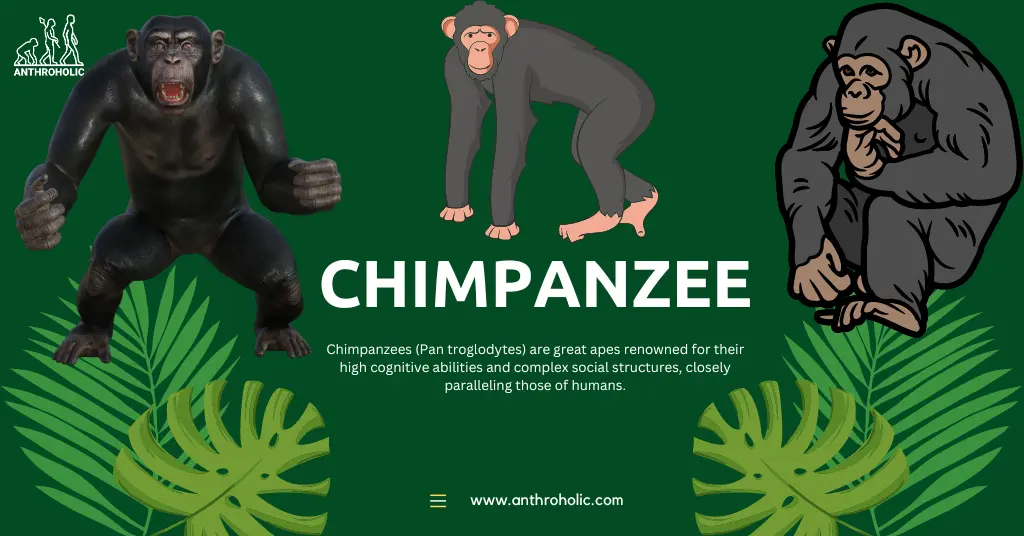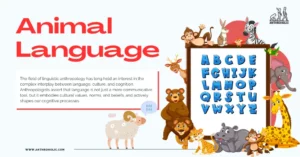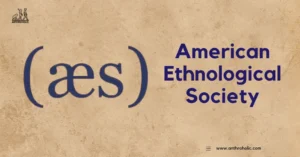AI Answer Evaluation Platform Live Now. Try Free Answer Evaluation Now
Chimpanzee
Chimpanzees (Pan troglodytes) are great apes renowned for their high cognitive abilities and complex social structures, closely paralleling those of humans [1]. They inhabit the forests and savannahs of equatorial Africa, exhibiting behavioral and physical variations across different regions. As our closest living relatives, sharing around 98.7% of our DNA, chimpanzees provide unique insights into human evolution and cognition [2].

Physical Attributes and Life Cycle
Chimpanzees are covered in coarse black hair, excluding their faces, palms, and soles. Mature males can stand up to 1.7m tall and weigh 70 kg on average, while females are slightly smaller. A baby chimp’s lifespan can stretch up to 50 years in the wild.
Table 1: Life Cycle of a Chimpanzee
| Stage | Age | Description |
|---|---|---|
| Infant | 0-5 years | Nursed by mother, gradually introduced to solid foods |
| Juvenile | 6-9 years | Less dependent on mothers, increased interaction with peers |
| Adolescence | 10-15 years | Sexual maturation, males begin showing dominance |
| Adult | 16+ years | Fully grown and sexually mature, males establish rank in hierarchy |
Social Structure
Chimpanzees live in a fission-fusion society where individuals form temporary sub-groups (parties) within a larger, more stable community [3]. Males are dominant and establish strict hierarchies through aggression and alliance formation. Females are less social, focusing on rearing offspring. Key elements of their social behavior are:
- Communication: Chimpanzees use a wide variety of vocalizations, gestures, and facial expressions to communicate. They also engage in grooming, which strengthens social bonds.
- Cooperation and Conflict: Chimpanzees engage in cooperative behavior such as hunting, territory defense, and sharing food. They also display intergroup conflicts, typically led by males.
- Cultural Variation: Different chimp communities exhibit unique behaviors, including tool use and hunting techniques, showing cultural variation across populations [4].
Diet and Tool Use
Chimpanzees have a predominantly frugivorous diet, but they are omnivorous, consuming various plant species, insects, honey, and occasionally hunting smaller mammals. They are known for their innovative use of tools to obtain food:
- Stick Tools: They modify sticks to extract ants and termites from their nests.
- Stone Tools: They crack nuts using rocks as hammers and anvils [5].
Cognitive Abilities
Chimpanzees are renowned for their remarkable cognitive abilities. They exhibit self-recognition, problem-solving, and the capacity for future planning. There is evidence of a rudimentary form of symbolic communication in the ‘gestural language’ that they use, and they have been taught to use signs and symbols in lab conditions.
They display empathy, often comforting others in distress, which is a key element of their complex social interactions. They also demonstrate deception, implying a level of Theory of Mind, an ability to understand the thoughts and intentions of others, which was once considered unique to humans.
Reproduction and Parenting
Females typically have their first offspring between the ages of 13 and 14. There is no specific breeding season, and females signal their readiness to mate by displaying physical changes that attract males.
Infants are born after an eight-month gestation period and depend on their mothers for the first few years. Mothers invest considerable time teaching their offspring how to forage for food and use tools – a form of cultural transmission.
Chimpanzees and Human Evolution
Given their genetic similarity to humans, chimpanzees have significantly contributed to our understanding of human evolution. The split between human and chimpanzee lineages is thought to have occurred around 5-7 million years ago.
Studying chimpanzees, their behavior, and cognition provides key insights into the evolutionary roots of human culture, cognition, and social behavior. Their use of tools, for instance, sheds light on early hominid behaviors.
Conservation Efforts
With chimpanzees facing increasing threats, various initiatives have been implemented for their conservation. These include anti-poaching laws, establishment of protected areas, and disease monitoring programs. Rehabilitation and release programs are also key, ensuring confiscated or orphaned chimps can return to the wild.
Conclusion
Our understanding of these incredible creatures continues to evolve, shaping our view of ourselves and our connection to the natural world. The fight for their survival is, in many ways, the struggle for our own environmental consciousness and the preservation of biodiversity.
References
[1] Goodall, J. (1986). The Chimpanzees of Gombe: Patterns of Behavior. Cambridge, MA: Belknap Press of Harvard University Press.
[2] Prüfer, K., et al. (2012). The bonobo genome compared with the chimpanzee and human genomes. Nature, 486(7404), 527-531.
[3] Nishida, T. (1990). The Chimpanzees of the Mahale Mountains: Sexual and Life History Strategies. Tokyo: University of Tokyo Press.
[4] Whiten, A., et al. (1999). Cultures in Chimpanzees. Nature, 399(6737), 682-685. https://doi.org/10.1038/21415
[5] Boesch, C., & Boesch, H. (1990). Tool use and tool making in wild chimpanzees. Folia Primatologica, 54(1-2), 86-99.




